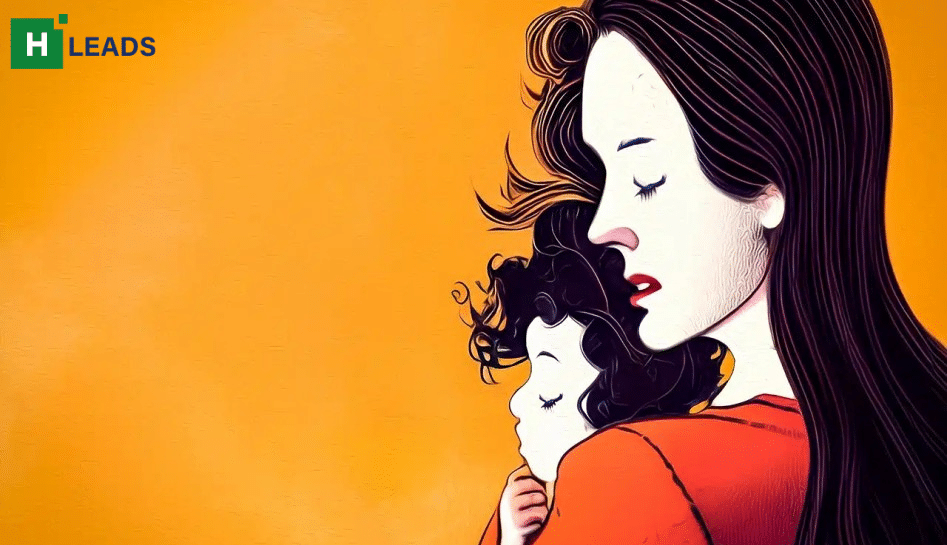One in seven postpartum women experience PPD, yet only around half of those affected receive therapy
The Food and Drug Administration (FDA) recently granted approval for a short-term oral medicine called zuranolone that could help new parents who struggle with postpartum depression (PPD). This marks a significant achievement as zuranolone becomes the inaugural pill aimed at addressing PPD, an incapacitating condition which affects around half-million women annually in the United States.
Postpartum Depression: What we know
It is a serious mental illness that many people experience after giving birth. After childbirth, a woman goes through a range of hormonal, physical, emotional, and psychological changes. It goes beyond the common emotional ups and downs often referred to as “baby blues.” However, PPD is identified by a continuous feeling of a low state of mind in new mothers, followed by sad feelings. If the feelings continue for longer than two weeks or the person struggles to care for their baby, the person may have PPD.
The advocacy group March of Dimes explains that after a person has had a baby, levels of estrogen and progesterone suddenly drop and that many people feel overwhelmed and out of sorts. This condition typically emerges within the first few weeks after childbirth but can develop up to a year later.
One in seven postpartum women experience PPD, yet only around half of those affected receive therapy. Given that mental health challenges have emerged as the primary cause of pregnancy-related fatalities in the United States, experts highlight the significance of broadening the range of treatments available for postpartum depression.
According to a report of World Health Organisation, over 22% of Indian mothers suffer from PPD, and the country needs more funding to strengthen its capability in maternal health care.
Later in life, it also results in the mother developing obsessive-compulsive disorder and anxiety. Many psychological risk factors are linked with PPD. Models from the biological, psychological, integrative, and evolutionary sciences are used to explain the pathophysiology of the development of PPD and link the condition’s symptoms to specific environmental and psychological components.
Postpartum Depression vs Baby Blues
The Office on Women’s Health (OASH) explains that the primary distinction between baby blues and PPD lies in the intensity and duration of the emotions a person is experiencing. Childbirth can be both physically and emotionally taxing. Medical professionals widely acknowledge that experiencing baby blues during the initial weeks after childbirth is quite common.
While many new parents experience mood swings and heightened emotions, Postpartum Depression (PPD) is a distinct and more serious condition than the “baby blues.” Baby blues encompass feelings of sadness, anxiety, and exhaustion that can impact individuals after having a baby. Generally, the baby blues tend to subside within a span of 3 to 5 days.
Individuals with Baby Blues might include mild mood fluctuations, episodes of crying, decreased appetite, and difficulty sleeping. According to a study conducted in 2023, these emotions typically diminish, with most individuals recovering in around two weeks.
However, if mood swings, anxiety, or depression become severe or endure for more than two weeks, it’s possible that someone is dealing with PPD.
OASH suggests that individuals with PPD consult a healthcare professional if these feelings persist, more so, if one is struggling with thoughts of self-harm or harming others.
What changes can we expect with FDA approval of zuranolone
The FDA’s decision originated in response to a recent study that indicated how effectively a two-week course of zuranolone worked to alleviate the symptoms of PPD. Around 200 women with severe Postpartum Depression participated in the placebo-controlled, randomised clinical trial and were randomly assigned to receive either 50 milligrams of zuranolone per day or a placebo pill for a period of 14 days. The 17-item Hamilton Depression Rating Scale (HDRS), which evaluates the existence and severity of symptoms, including suicidal ideation, insomnia, anxiety, and weight loss, was used to determine the severity of the symptoms.
The effects of zuranolone on depression symptoms were significantly reduced after three days of treatment. This is significantly faster compared to typical antidepressants, which might require two weeks or longer to have an effect. In comparison to the placebo group, the therapy group’s depression levels had improved by 29.4% by day 15. After starting treatment, improvements appeared three days later and remained for 45 days, according to the study, which was released on July 26 in the American Journal of Psychiatry.
Samantha Meltzer-Brody, the primary investigator of brexanolone’s clinical trials, says zuranolone is the “first cousin” of brexanolone. Both medicines mimic allopregnanolone, a neurosteroid that naturally protects pregnant women’s and their foetuses’ brains from stress. To make up for lower levels of allopregnanolone in women with postpartum depression, the medications target the brain’s GABA receptors, which are a crucial signalling route involved in stress and mood regulation. Brexanolone and zuranolone, in contrast to conventional SSRIs, offer quick and long-lasting relief following a single course of therapy. However, zuranolone has been altered to allow for easier oral administration.
The most important part of the approval is the fact that the medicine is approved exclusively for PPD, and not any other features of the drug. While there are other effective antidepressants for treating this disorder, a specific antidepressant that has been shown to target it may help lessen the stigma associated with the condition, according to a number of doctors and researchers.
Also Read : India’s first depression surgery post mental health Act 2017


















Add Comment